warioman/iStock/GettyImages
Noted food author Julia Child advised home cooks to "always start out with a larger pot than what you think you need." If you are a cook who values your pots over your knives, you probably own an assortment of pots and pans, and if you're lucky, a Dutch oven is among them. While Dutch ovens and other cooking pots have their pros and cons, they both serve a purpose in a well-stocked kitchen.
Origins
The first cooking pot, which was made of ceramic clay 20,000 years ago, was probably used for making fish soup. Beginning during the Iron Age at about 1000 B.C., metal pots became the norm. Pennsylvania Dutch settlers brought their cast iron pots with them when they arrived in the U.S. from Europe in the 1700s. The term "Dutch oven" was coined in America to refer to these pots. Manufacture of Dutch ovens in America began in the 1800s.
Materials
Dutch ovens are made from cast iron and have tight-fitting lids, while other cooking pots may be manufactured from copper, aluminum or stainless steel with lids that may or may not fit tightly. Additionally, some Dutch ovens have an enameled outer layer. Clad pots have aluminum inner layers to help with heat conductivity and heat retention and stainless steel outer layers to prevent a metallic reaction with acidic foods.
Pros and Cons
Dutch ovens are heavy, but they retain heat well. Unenameled Dutch ovens react with acidic foods, leaching harmless iron molecules and adding a metallic taste to food. Copper, the most expensive pots, conduct heat well, but they too are heavy. Aluminum pots are inexpensive and conduct heat well, but the soft metal dents, scratches and reacts with acidic foods. Stainless steel is a poor heat conductor, but it is durable. Clad cookware heats evenly, is easy to care for and attractive -- an all-around good choice.
Uses
Because Dutch ovens retain heat well, they are often used for foods that require long cooking methods, such as braising and stewing. Once you set the pot at a certain temperature, it stays at that temperature. Dutch ovens also work for baking and campfire cooking, since the lids fit so tightly and the pots are so sturdy. Regular cooking pots may or may not be ovenproof, and their lids are typically not heavy and tight-fitting; however, they work well for boiling, simmering and sauteing.
Related Articles
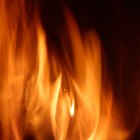
Which Fabrics Are Most Fire Resistant?

Is Revere Ware Aluminum?
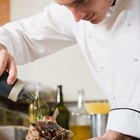
What "Tools of the Trade" Cookware is ...
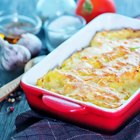
What Are the Benefits of Stoneware ...
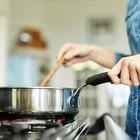
What Are the Dangers of Titanium in ...

What Is Better for Cookware: Glass, ...

The Difference Between a Chafing Dish & ...

Anodized Vs. Teflon in Cookware
How to Lower Cooking Times & ...
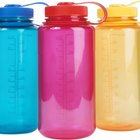
Heating Foods in Plastic & BPA
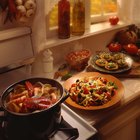
Characteristics of Oven-proof Plates
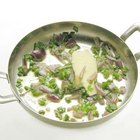
What Is the Best Cookware for Electric ...
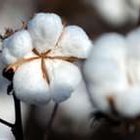
Nomex Vs. Indura Cotton
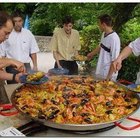
What is a Paella Pan?
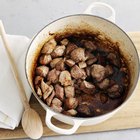
Can Ceramic Cookware Be Used on ...

Are Nickel Lined Pans Safe?

What Are the Dangers of Cooking With ...

Titanium Vs. Tourmaline Flat Irons

Can I Make a Cake Mix in a Ceramic Dish?

What Is Magnalite?
References
- Good Reads: Quotes About Cooking
- National Public Radio: Earliest Cookware Was Used to Make Fish Soup
- Food Timeline: What Is a Dutch Oven?
- Essential Humanities: The Stone, Bronze, and Iron Ages
- The Deluxe Food Lover's Companion; Sharon Tyler Herbst and Ron Herbst
- The Science of Good Cooking; Editors at America's Home Cooking and Gus Crosby
Writer Bio
Susan Lundman began writing about her love of cooking, ingredient choices, menu planning and healthy eating after working for 20 years on children's issues at a nonprofit organization. She has written about food online professionally for ten years on numerous websites, and has provided family and friends with homemade recipes and stories about culinary adventures. Lundman received her M.A. from Stanford University.